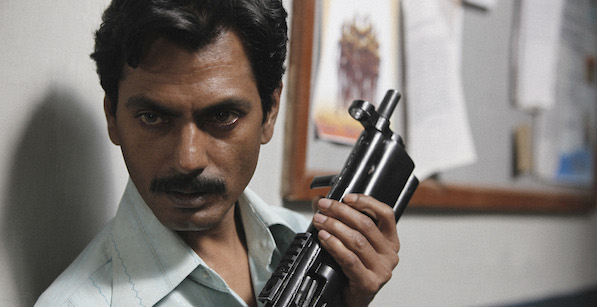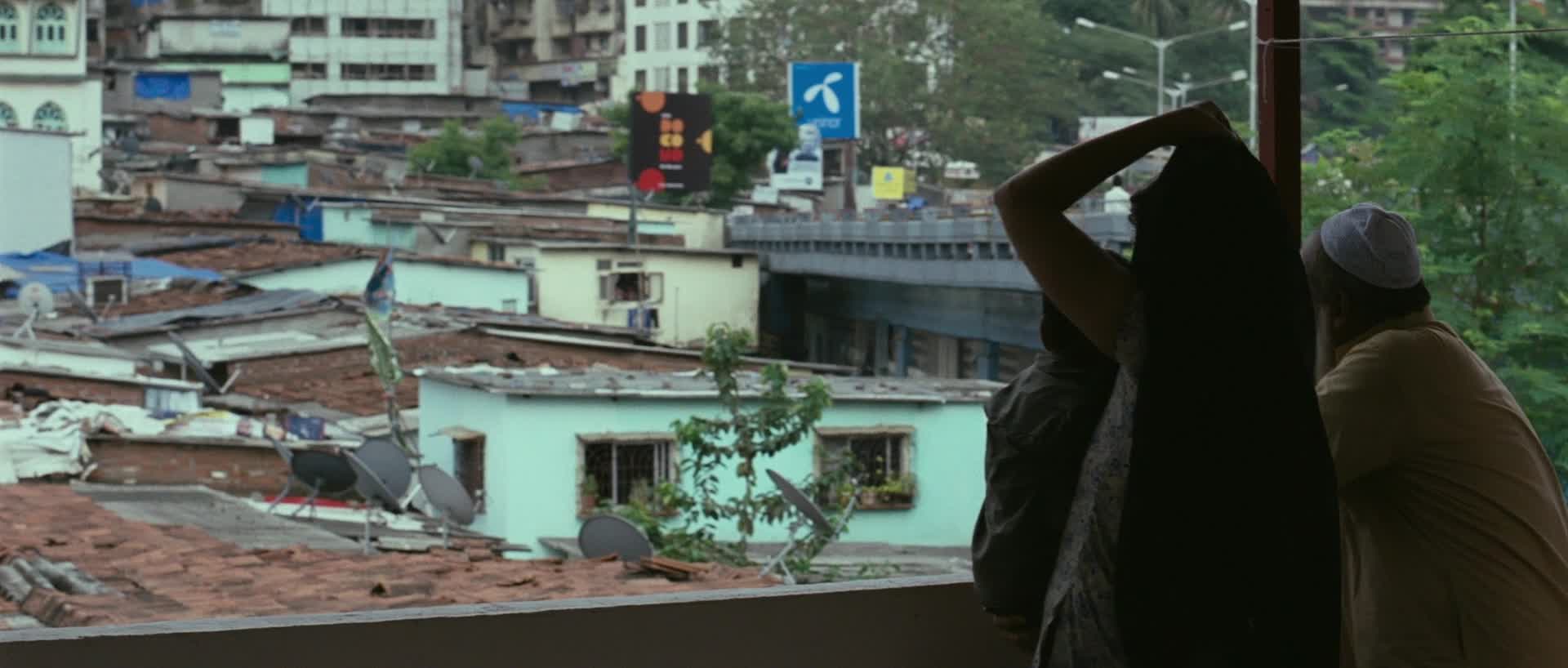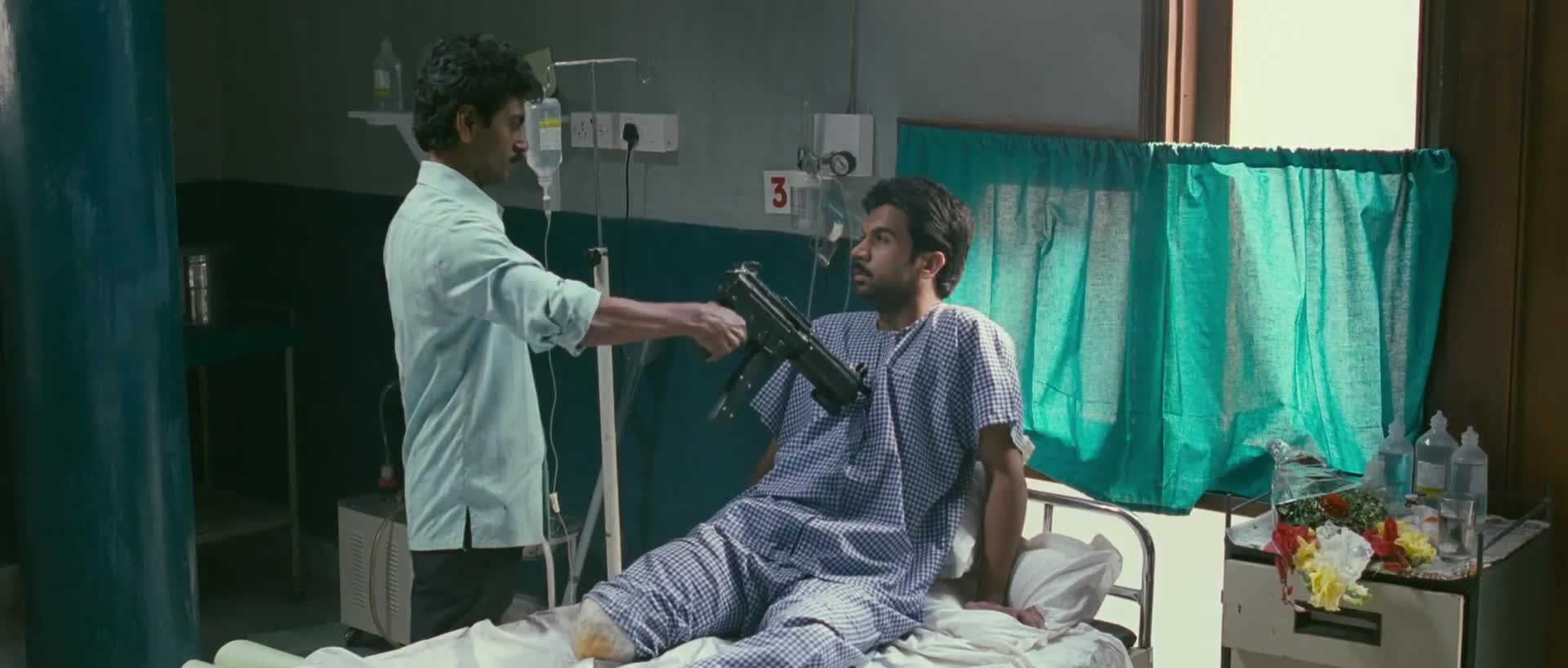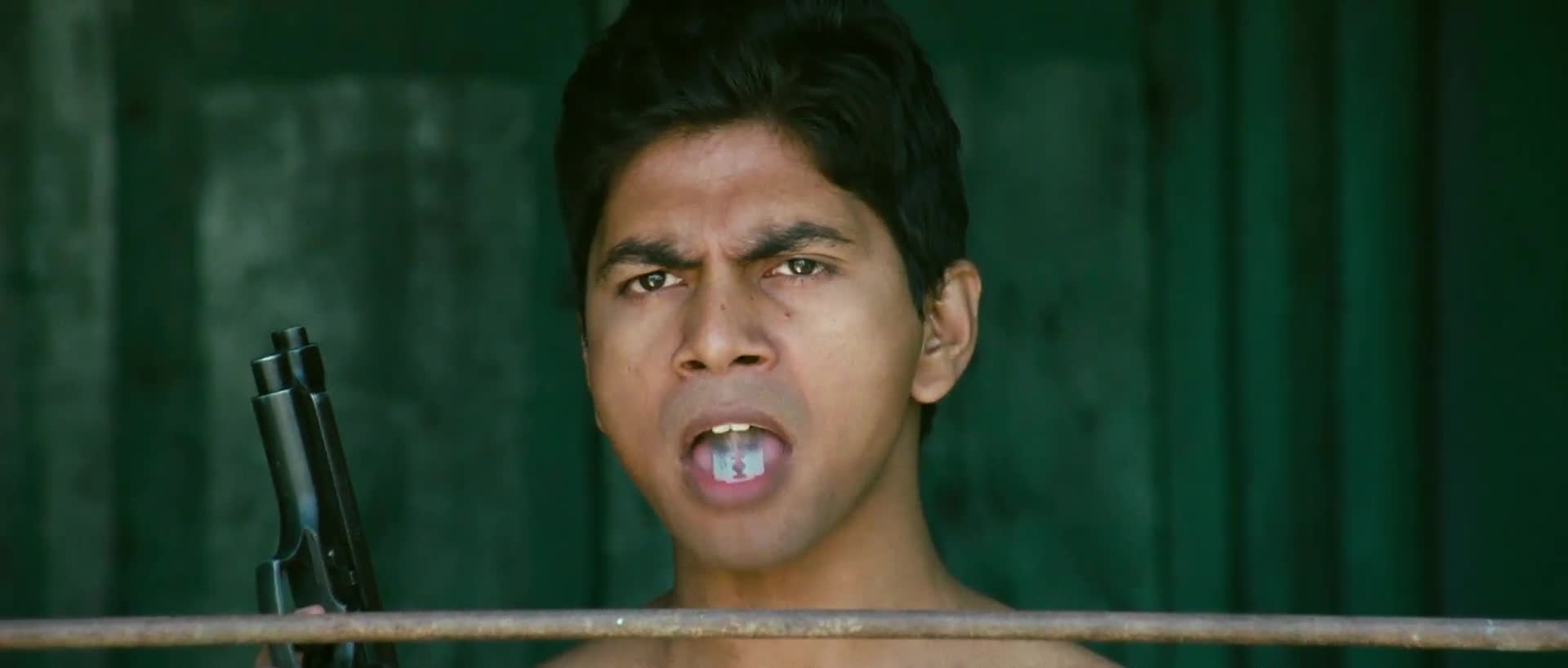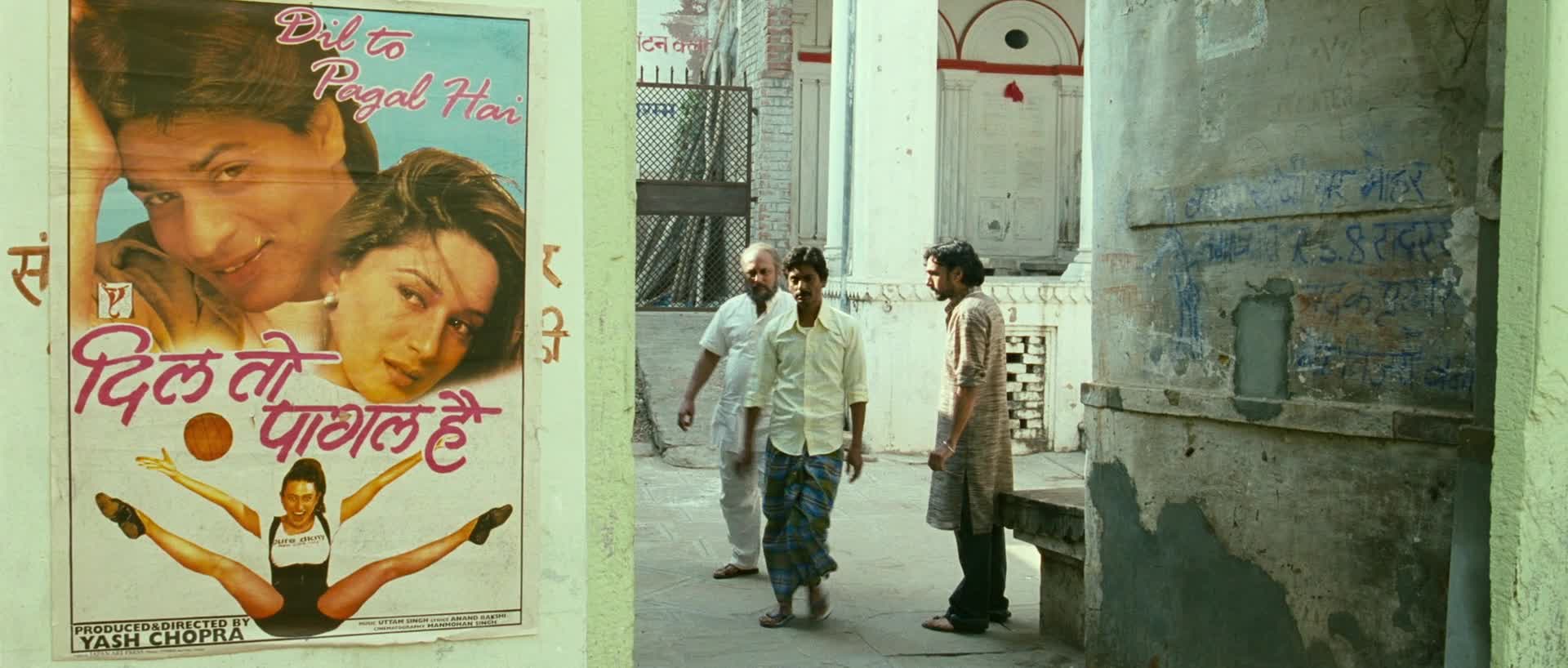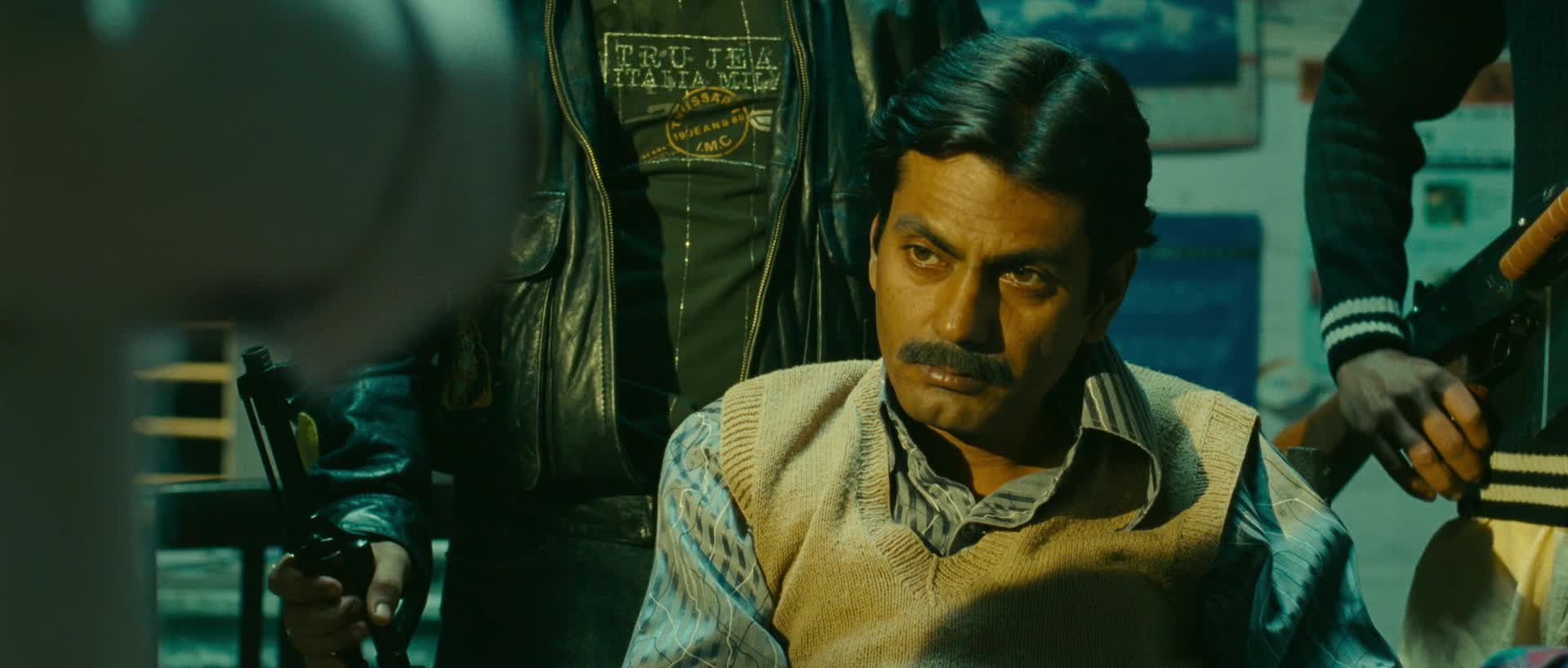[Editor’s note: The following featured review of Indian breakout epic Gangs of Wasseypur contains spoilers. You may want to read only after viewing the film.]
The last scene in Gangs of Wasseypur—which comes up more than five hours after the first one—features two adults, with a child, who wanted to leave the bloodshed and violence of the town in the film’s title and instead move to a more civilized place. It is a quiet moment set in Mumbai, the first time that metropolis shows up in Anurag Kashyap’s magnum opus.
The narrator—who so far has been telling us with breathless fervor about the awe and terror the protagonists inspired in people—remarks, sans expression, “Wasseypur was a battlefield. It’s still a battlefield.” In two lines he undercuts all the heroics of our characters. The lesson is: a place like Wasseypur can make anyone feel larger-than-life because of how spectacular and dramatic living there is. But, lest one get deluded, it’s worth remembering that Wasseypur provides the theatrics, not the person. In the larger scheme of things, these people are still insignificant and to remind them of that are their tiny and shabby new dwellings, a far cry from their spacious bungalow in Wasseypur. Metropolises have a way of teaching superstars where they belong.
And “deluded” would be a good way to describe many characters in the second part of Gangs of Wasseypur. Repeatedly we see people become blinded by power and lose all sense of rationality. At least some people get drunk on power they’ve earned and, at one point, deserved. The worst cases are the idiots who abuse the power they have merely inherited. A recurring theme is people meeting their downfall because of being mean to—and consequently betrayed by—the people closest to them: wives, aides, sons. If Kashyap had chosen to end his epic with a moral, he could have gone with: “Don’t be a shit to your henchmen.”
Revenge is meaningless. In the best of situations, it leads to a vacuum in the perpetrator’s life, who has nothing to do after exacting retribution. In the worst, it leads to a cycle, where one hunter becomes someone else’s hunted. Gangs of Wasseypur has dozens of cases of the latter, which makes the fates of its major characters a foregone conclusion.
Kashyap finds other ways of shocking the audience: such as constantly ratcheting up the depravity. Four hours into the saga, a woman is murdered in cold blood for the first time in the narrative. I thought I had become inured to killing and rape by this point but this act left me stunned. Suddenly, it seemed like all bets were off. And to Kashyap’s credit, the last hour of this film genuinely feels like it built atop whatever came before.
In this installment of the five-hour-whole, you’re made aware of the passing of time itself when watching two characters engage in a pointless motorcycle challenge, or one of them carrying a snake around later. One peripheral character is called “Tangent” and the very fact that we are told this in a screen heading is … a tangent.
It all leads to a concluding section—which covers the nineties to the aughts—that gets right those numerous things that matter. It’s delightful to see how important Bollywood is in characters’ lives, with preferences varying across generation. Each male wants to emulate his era’s superstar, while a father berates his son for watching a romantic film. Second, the world develops in ways that fundamentally alter our characters’ proclivities. In the first part, a chase was direct and brutal; in this, characters get lost in traffic and bogged down at gas stations. Third, Wasiq Khan’s production design is immaculate: from the evolution of currency notes to the hoardings for MBA classes as time progresses, you get the feeling India is moving with our characters.
But the most important part of this installment is the leading performance by Nawazuddin Siddiqui, who excelled in this role right from his hilarious introduction, where he was crying in a cinema hall. Faisal Khan, the middle child, is the complete opposite of his hot-headed father and brother: he’s quiet, prefers smoking to talking and doesn’t seem like he’ll be able to fill the big family shoes. He’s also a much kinder person; he gets a glass of water for his brother’s grieving widow, an act so considerate his father would be incapable of thinking it. He adopts his duties of seeking revenge more as the days pass, but beneath this brutal facade is an anxiety that comes bubbling forth in another outburst of tears in front of his feisty wife. Siddiqui portrays this rising yet reluctant leadership with such believability he could have saved a much weaker script.
Today Siddiqui is the darling of independent Indian cinema, but this is where he broke out. Just for that, Gangs of Wasseypur would be worth watching. That it’s smart, inventive, funny and poignant is just bonus.

